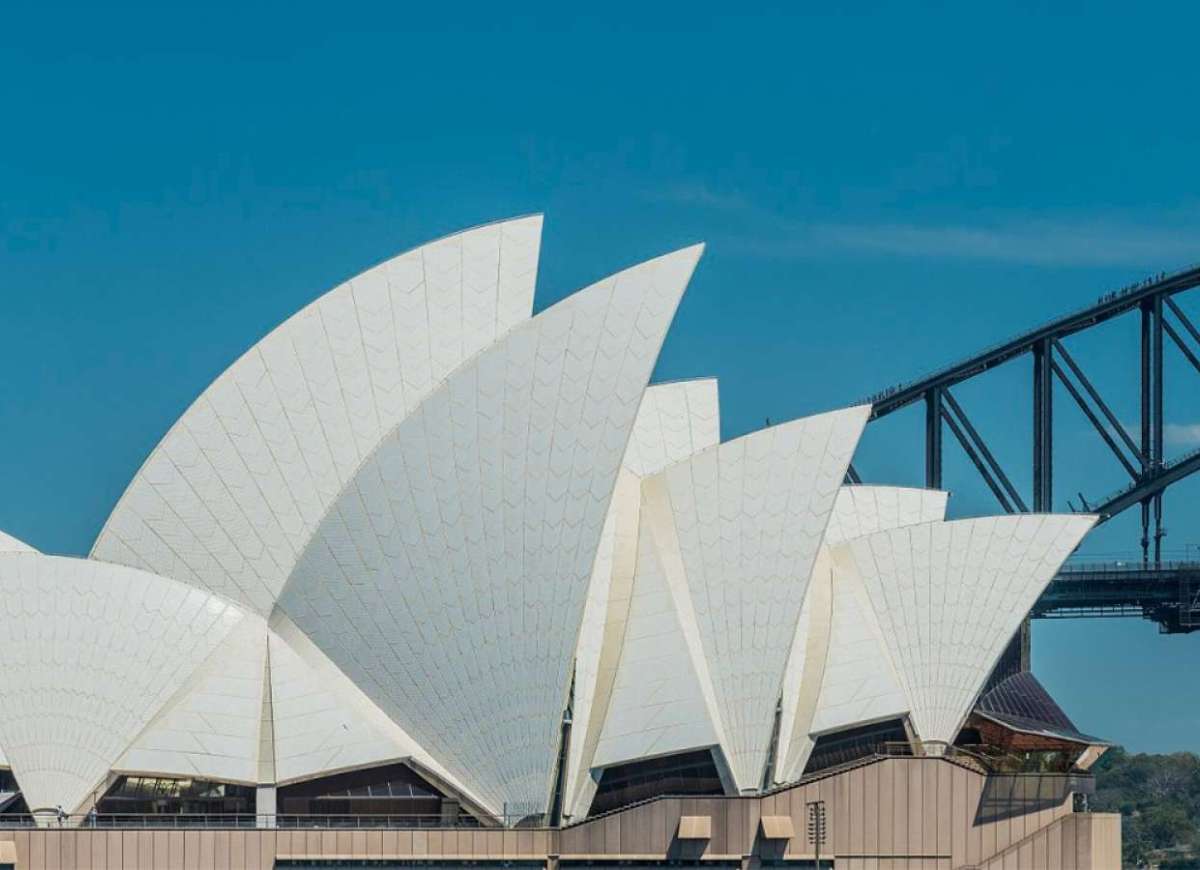
Through Cultural Attractions of Australia, take an architectural tour of the Sydney Opera House that will allow you to see it from all sides – from political history to engineering details.
Sydneysiders have seen it countless times. Almost everyone else, wherever they might be around the world, will recognise it as the symbol of a nation. But how much do we really know about the Sydney Opera House? On my recent visit with Cultural Attractions of Australia, I found out that it’s not only visiting the famous white sails in person that counts, but also the level of knowledge and immersion that only a behind-the-scenes tour can provide.
Approaching the Opera House is an experience and of course I found myself absorbing the wider harbour setting as I made my way down under the lower concourse. It is here, shaded and connected the outdoor dining areas, that the tour gathers. The starting point is more than appropriate because it sets the full scene and made me feel a connection to the entire site.
The experience is certainly holistic – this is a tour that brings together architecture, Indigenous and political history, engineering and local geography. Above all, I thought about how a true appreciation of any architectural masterpiece demands this kind of multifaceted, multilayered approach. Expect to gain a sense the building from many different sides, whether you’re a first-time visitor from overseas or a local commuter who passes by daily on the ferry.
My guide, Darryl Cooper, talked about how revolutionary the Opera House was: “It’s a building from the modern age but not the information age; it’s from a time of machinery and high-end mathematics but not computer modelling.” This was just one key thought from a technological point of view. My impression was that wherever your interest might lie – from political and architectural context to construction detailing – there are stimulating insights to learn from.
Indeed, the variety of detail is what sets this tour apart. I felt refreshed that it was more than a superficial commentary on the iconic shape of the Opera House. Instead, it took me around, under, up and through the building to really create a full understanding of the history of this place.
As I moved through the concourse, soaking up the engineering and construction details of the elegant, long stretches of low concrete ceiling (look out for the hand-scrawled numbers still visible from the formwork), the classic spatial experience unfolded. It’s a procession through condensed space before emerging into the brilliant light, high spaces of the main lobby and bar area. Here, taking a close look at some of the material and construction details, the story of Danish-born architect Jørn Utzon, AC, gradually threaded its way into the experience.
I couldn’t help but feel something of an emotional, almost personal, connection as the tragic story of Utzon’s later exclusion from the project emerged. This was by no means the centrepiece of the tour but, as Cooper acknowledged, the story of the Opera House simply can’t be told without Utzon’s.
In one of the world’s finest architectural and natural settings, I again found my thoughts roving widely – from the human story of an individual designer to hard-headed engineering knowledge such as the 700 concrete pylons driven into the seabed. The tour is, in a word, varied.
The technical details were explained without losing the connection to the artistic and historic aspects of the building. More than anything, the tour was filled with substance and invited an intimate experience of the Opera House’s connections to site, political history and architectural context.
Touring such an iconic building sets the stage for further exploration and Cultural Attractions of Australia offers experiences across the country. Staying in Sydney, for example, there’s nothing quite like getting out on the harbour and a sailing experience on historic Duyfken will frame the Opera House from a whole new perspective. The Yiribana Gallery showcasing Indigenous art is a highlight of the new building at the Art Gallery New South Wales while, further south, Tasmania’s Mona has a terrific collection of works by light artist James Turrell.


